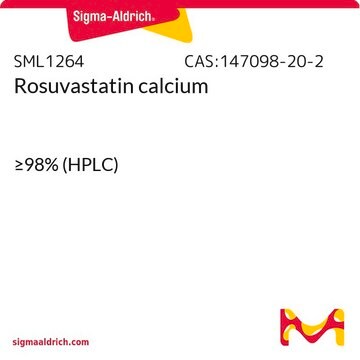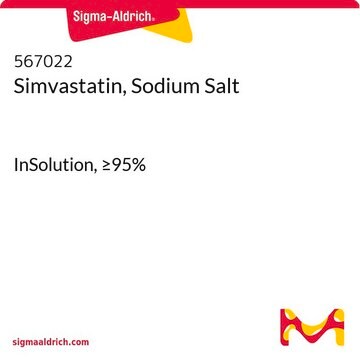Simvastatin ist ein spezifischer Inhibitor der HMG-CoA-Reduktase und ein Cholesterinsenker.
Simvastatin ist ein spezifischer Inhibitor der HMG-CoA-Reduktase, dem Enzym das die Umwandlung von HMG-CoA in Mevalonat katalysiert. Diese Umwandlung ist ein früher Schritt in der Cholesterin-Biosynthese. Es wird bei der Behandlung von Hypercholesterinämie verwendet, da es den Low-Density-Lipoprotein- ??und Triglycerid-Level verringert und den High-Density-Lipoprotein-Level erhöht. Simvastatin ist ein Lacton, das in vivo leicht zur entsprechenden β-Hydroxysäure hydrolysiert und es kann vor der Verwendung durch eine Behandlung mit NaOH in EtOH aktiviert werden. Es ist ein synthetisches Analogon von Lovastatin (Prod.Nr. M2147).
Simvastatin ist ein spezifischer Inhibitor der HMG-CoA-Reduktase,
[2] dem Enzym, das die Umwandlung von HMG-CoA zu Mevalonat katalysiert, einem frühen Schritt in der Biosynthese von Cholesterin. Es wird in der Behandlung der Hypercholesterinämie eingesetzt,
[1] da es den Spiegel von LDL-Cholesterin und Triglyceriden senkt und den HDL-Spiegel erhöht. Simvastatin ist ein Lacton, das
in vivo leicht in die entsprechende β-Hydroxysäure hydrolysiert wird. Es kann vor Einsatz durch Behandlung mit NaOH in EtOH aktiviert werden. Es hat eventuell auch positive Auswirkungen auf die endotheliale Funktion, entzündliche Prozesse, Glattmuskelzellfunktion, Gefäßwandfunktion,
[5] Hämostase und LDL-Oxidation.















